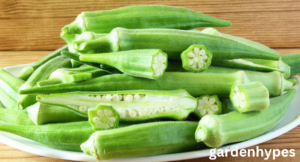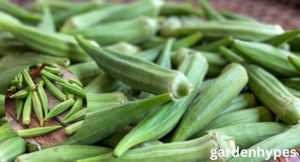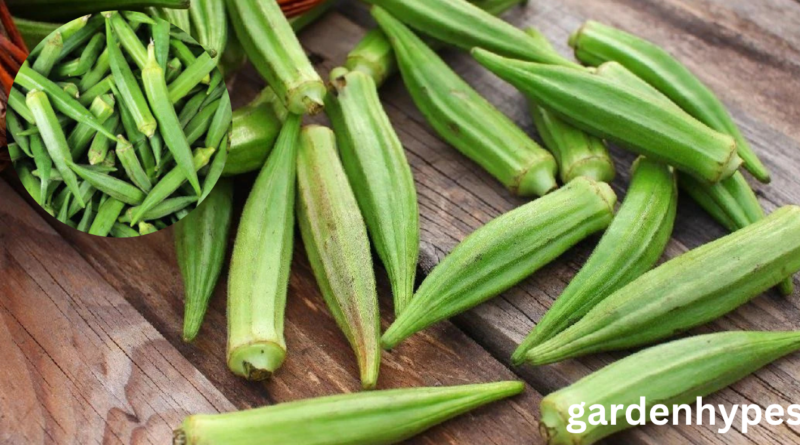the Okra Shortage What’s Really Going On
Food shortages aren’t exactly breaking news anymore, but this time, it’s not baby formula or eggs—it’s okra. That’s right, the humble green pod that’s essential in dishes from gumbo to bhindi masala is suddenly scarce. If you’ve been to your local grocery store lately and noticed either empty produce shelves or sky-high prices for okra, you’re not alone. This article dives deep into the okra shortage, exploring what caused it, how it’s affecting our kitchens and wallets, and what lies ahead.
click in link corn shortage
Let’s be real—okra isn’t a food most of us think twice about… until it’s gone. But for millions around the world, it’s a staple ingredient, a cultural food, and in some cases, a primary source of nutrition. So when a global shortage of okra hits, it does more than inconvenience a few home chefs—it sends ripples through economies, communities, and even global agriculture systems.
We’ll break down the complex web of climate change, crop disease, and global trade that’s led to this scarcity—and how you can adapt. So buckle up and keep reading.
Introduction to the Global Okra Crisis
Why Okra Matters in Global Cuisine
Okra is more than just a vegetable—it’s a cultural symbol and culinary cornerstone across continents. Known by many names like “lady’s finger” in Asia and “gumbo” in the American South, okra is used in soups, stews, stir-fries, and even fried snacks. Its unique texture—slippery to some, magical to others—adds depth and complexity to many beloved dishes.
In India, it’s an everyday side dish. In West Africa, it thickens traditional stews. In the Southern U.S., it’s the soul of gumbo. Its importance can’t be overstated: okra feeds not just stomachs but entire traditions.
And here’s the kicker—okra is loaded with nutrition. Rich in fiber, vitamins A and C, and antioxidants, it supports heart health and digestion. This makes it a go-to for health-conscious eaters and traditional medicine alike. So when okra starts disappearing, it’s not just a culinary loss—it’s a nutritional one too.
With the growing awareness of plant-based diets and sustainable eating, okra has even become more popular in Western countries in recent years. All of this demand combined with supply issues has brought us to the current crisis.

The Rising Demand for Okra Across Continents
In the last decade, global demand for okra has surged, thanks to growing immigrant populations, the popularity of ethnic cuisine, and the rise of plant-based eating. Restaurants now offer gourmet versions of okra dishes, food bloggers rave about its health benefits, and home cooks try to recreate global dishes.
click in link corn shortage
Countries like the U.S., Canada, and the U.K.—which traditionally imported okra—are now consuming more than ever. At the same time, producing regions like India, Nigeria, and Egypt are facing reduced yields due to weather anomalies and supply chain hiccups.
The imbalance between supply and demand has never been so extreme. Okra, which was once available at dirt-cheap prices, is now a high-demand, short-supply item. And the price spikes are proof.
What’s Causing the Okra Shortage?
Climate Change and Extreme Weather Events
Let’s call it what it is—climate change is wreaking havoc on agriculture, and okra hasn’t been spared. Rising temperatures, unpredictable monsoon patterns, floods, and droughts have devastated okra crops worldwide. In countries like India, prolonged dry spells have significantly reduced yields, while in parts of Africa, torrential rains have flooded entire plantations.
Okra is a warm-weather crop, yes, but it thrives under specific conditions. When temperatures soar too high or rainfall becomes erratic, the plant fails to flower or produces poor-quality pods. This has led to harvests being delayed, reduced, or even wiped out in some regions.
What’s worse is the unpredictability. Farmers can’t plan or adapt fast enough, and many are abandoning okra altogether for more resilient or profitable crops. And when fewer farmers grow okra, the entire supply chain takes a hit.
In 2024 alone, major okra-producing regions in Asia and Africa reported up to a 40% drop in production due to heatwaves and drought. These are numbers you just can’t ignore.
Pest Infestations and Crop Diseases
As if climate change weren’t enough, pests and diseases have also taken a toll on okra crops. Warmer, wetter conditions create the perfect breeding ground for pests like aphids, flea beetles, and the dreaded okra fruit borer. Once these pests infest a farm, damage can be catastrophic—especially for small-scale farmers who lack access to expensive pesticides or biological controls.
Fungal infections and viral diseases have also become more prevalent. Yellow vein mosaic virus, a common disease in India and Pakistan, has wiped out entire fields. These diseases don’t just reduce yield—they make the crops unsellable due to their appearance and texture.
And unlike large-scale crops like corn or wheat, okra doesn’t receive the same level of scientific research or funding. There’s less genetic modification, fewer disease-resistant strains, and limited availability of effective treatments.
All these factors combined have led to a dramatic decline in healthy okra production worldwide.
Supply Chain Disruptions Post-Pandemic
Even before climate and pests became headline news, the COVID-19 pandemic had already weakened global food supply chains. Transportation delays, port backlogs, labor shortages, and rising fuel prices made it harder and costlier to ship okra from farms to markets.
For instance, many African nations export okra to Europe and the Middle East. With shipping delays and increased freight costs, large shipments were either spoiled or delayed past their prime. Some importers cut down on okra orders altogether.
click in link corn shortage
Similarly, domestic distribution within countries suffered. Lockdowns and border closures meant that local farmers couldn’t reach urban markets, leading to okra going to waste even when it was available.

The aftershocks of the pandemic still linger. And for a perishable crop like okra, any delay in logistics can translate into a significant loss.
Faqs
- Why is okra so expensive now?
Okra prices have skyrocketed due to a combination of factors like climate change, pest infestations, supply chain disruptions, and increased global demand. Poor harvests in major producing regions such as India, Nigeria, and Egypt have drastically reduced the supply, leading to inflated prices in local markets and international exports. - Is the okra shortage temporary or long-term?
While some seasonal shortages may improve with better weather or new crops, experts warn that the current crisis reflects deeper, long-term issues like global warming and unsustainable farming practices. Without major investment in resilient agriculture and infrastructure, okra shortages could become more frequent. - What countries are most affected?
Countries where okra is a staple—such as Nigeria, India, Pakistan, Egypt, and Sudan—are hardest hit due to reduced yields. Import-heavy nations like the United States, the UK, and Canada are also affected by rising prices and limited availability in ethnic grocery stores and supermarkets. - Can I grow okra in my backyard?
Yes! Okra is relatively easy to grow at home if you live in a warm climate. It thrives in full sun, well-drained soil, and consistent watering. Even if you live in a cooler region, okra can be grown in pots indoors or in greenhouses during warmer months. Home gardening is a great way to bypass shortages and enjoy fresh produce. - What are the best recipes without okra?
If you can’t find okra, you can substitute it with vegetables that have a similar texture or function in cooking. Green beans, zucchini, and eggplant work well in stir-fries. In stews or soups, consider using file powder (sassafras) to replicate okra’s thickening properties. While nothing matches okra exactly, creative substitutes can still make your dish delicious.
